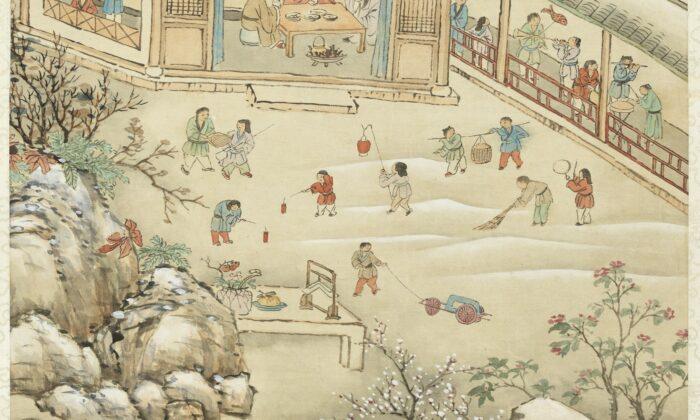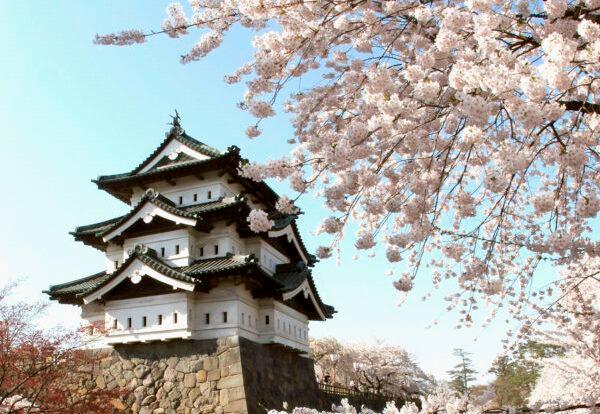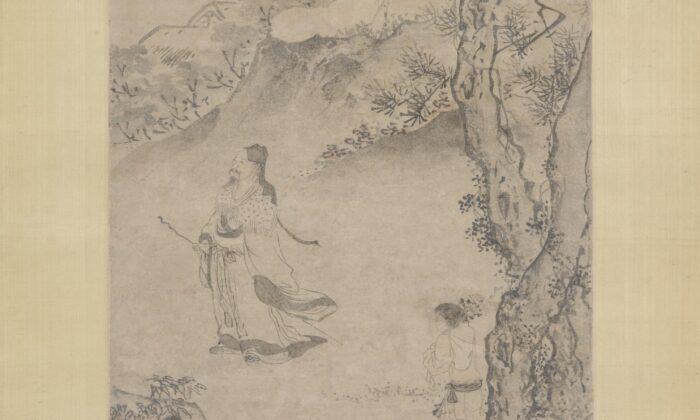The four seasons tell us where we are in the story of our year, but did you know that within each one, there are six miniseasons that last 15 days each? At least as far back as 139 B.C., sages in China recorded a seasonal change each year beginning around February 4 and called it Spring Commences.
This season is followed by Spring Showers, Insects Awaken, Spring Equinox, Bright and Clear, and Grain Rain. Summer, fall, and winter dance their intricate steps, too, which we’ll explore in this article, for a total of 24 solar terms. Each term is divided into three notable periods or pentads, of which there are 72.
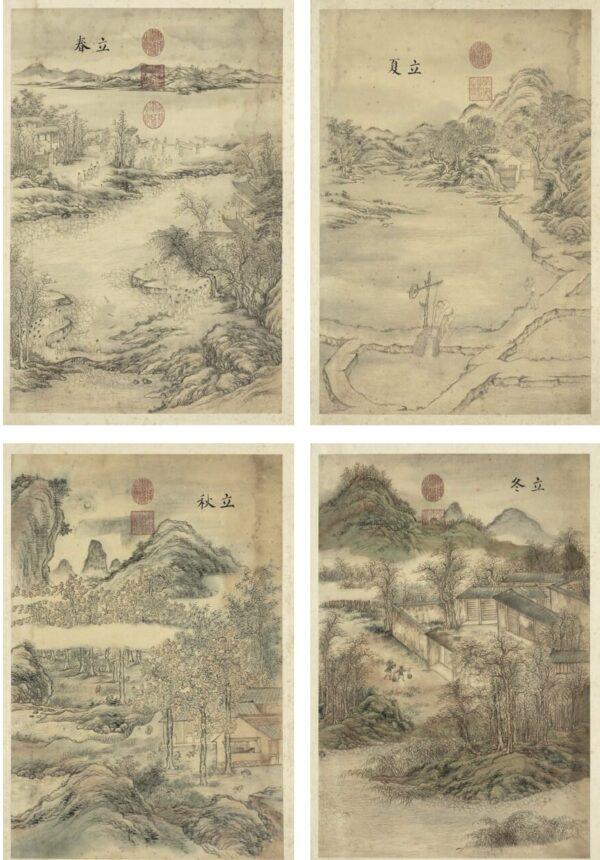
Four paintings from the book “A Grove in Four Seasons,” Qing Dynasty, by Zhang Ruoai. In the paintings, the seasons are identified by the names for the first solar terms of each season: Spring Commences, Summer Commences, Autumn Commences, and Winter Commences. The National Palace Museum
This ancient and sophisticated calculation of Earth’s circuit holds so much wisdom that Asian people who have long moved away from agricultural lifestyles still use it to optimize their diet and health and to mark important milestones. UNESCO’s Lists of Intangible Cultural Heritage includes the ancient Chinese understanding of seasonal rhythms. No matter how modernized we become, our bodies will always be subconsciously in tune (or painfully out of tune) with the year’s inescapable rhythms. Knowing the 24 solar terms can give us insight into what to expect next and what simple choices can help put us in step with nature.
The classic four seasons are only the beginning. The solar terms were first recorded in the book “Huainan Zi,” and they are evenly marked on the ecliptic in segments of 15 degrees. The description of the four seasons below is from Wu Cheng’s “A Collective Interpretation of the 72 Pentads,” a work from the Yuan Dynasty (A.D. 1271–1368).
Spring: The Preface
“Lichun” (Spring Commences) is the first solar term of a year. Its three pentads depict the subtlety of nature awakening: The mild breeze thaws the river, fish swim upward to the surface, and insects come out from hibernation. “Yushui” (Spring Showers) ensues; the ice melts, and the air becomes moist when raindrops fall. Otters hunt fish that swim upstream, wild geese migrate back to their northern homes, and seeds begin to sprout.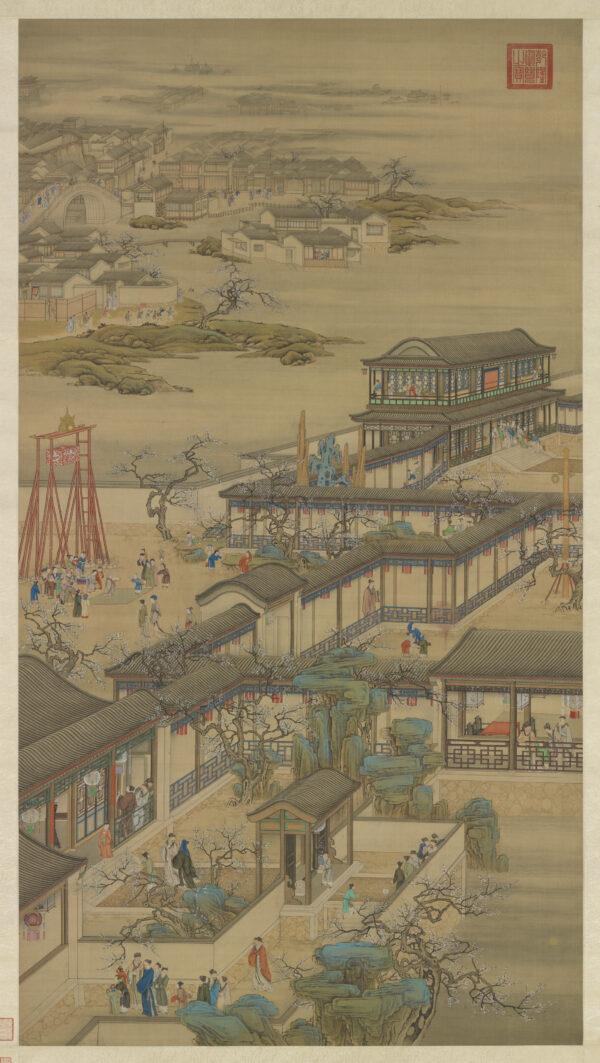
A scroll showing “Activities of the 12 Months: The First Lunar Month,” court artists, Qing Dynasty (1644–1911). The National Palace Museum
The Lantern Festival falls during this solar term. The first night of the year with a full moon marks the return of spring. “Jingzhe” (Insects Awaken) is the third solar term; peaches begin to blossom, orioles chirp, and caterpillars become butterflies. In traditional Chinese culture, spring is the time when the earth showers its benevolence on all living beings.
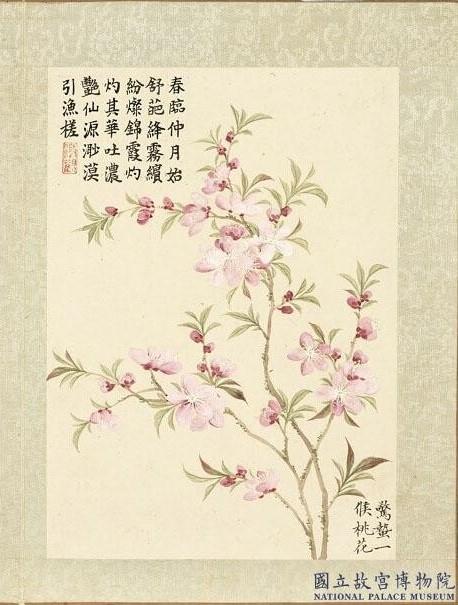
From the book “The 24 Wind Messengers for Blossoms,” Qing Dynasty, by Dong Gao. In “Jingzhe” (Insects Awaken), the peaches begin to blossom. The National Palace Museum
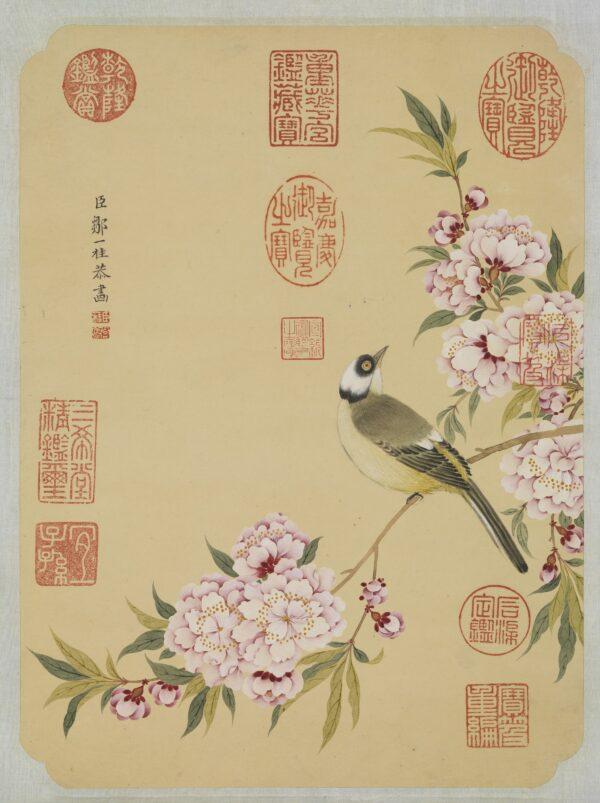
“Bird and Peach Blossoms in Spring,” Qing Dynasty, by Zou Yigui. The National Palace Museum
On “Chunfen” (Spring Equinox), there are equal periods of daylight and darkness across both hemispheres. In the days to come, the Northern Hemisphere will have longer daylight hours and more moisture. Throughout three pentads, swallows arrive in the north and nest, and thunderstorms crack with lightning.
The solar term “Qingming” means “bright and clear,” for the sky is bright, the air is fresh, and the breeze is bracing during these days. It’s the perfect time for a spring outing. Flowers are blooming and rainbows appear. The Tomb-Sweeping Festival falls on this day. That’s when people go to cemeteries to pay respect to their deceased relatives with offerings.
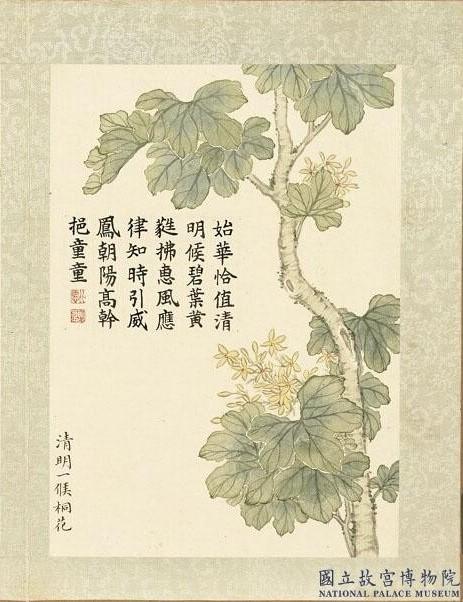
From the book “The 24 Wind Messengers for Blossoms,” Qing Dynasty, by Dong Gao. In “Qingming” (Bright and Clear), the paulownia starts to flower. When the sun travels from the term “Xiaohan” (Moderate Cold) to “Guyu” (Grain Rain), there are 24 pentads during which 24 kinds of flowers will bloom. The National Palace Museum
“Guyu” (Grain Rain) falls at the end of spring. It originates from the proverb “Rain nourishes all grains.” Duckweed sprouts, cuckoos fly, and the rice seedlings and spring tea leaves keep farmers occupied.
Summer: A Dynamic Period
During “Lixia” (Summer Commences), crickets and grasshoppers chirp, earthworms crawl out, and gourds ripen. Farmers markets carry all kinds of melons. In “Xiaoman” (Grain Buds), crops have started to plump but have not yet matured, while some grasses wither in the harsh sunlight.“Mangzhong” (Grain on the Ear) is the busiest time to seed millet and harvest barley and wheat. Sensing the dampness, the mantises come out, the shrikes start to sing, and the mockingbirds become silent. It’s a day to say farewell to flower fairies, as many blossoms are fading. The Dragon Boat Festival is approaching. It’s also a day to commemorate Qu Yuan, a famous exiled intellectual who fought against corruption in the Warring States Period (475–221 B.C.).
On “Xiazhi” (Summer Solstice), the Northern Hemisphere sees the longest day and the shortest night, and crops are in their prime. “Xiaoshu” (Lesser Heat) is a period when the weather is hot but not scorching. Fireflies and crickets are active in the balmy breeze, and eagles soar high in the sky. By comparison, “Dashu” (Great Heat) is much hotter. This is when people go hiking and swimming, or enjoy sweet watermelon slices to stay cool. According to folklore, dead grass can turn into fireflies during damp summers. The story implies the cycles of life.
Autumn: A Time of Serenity
“Liqiu” (Autumn Commences) falls when yang is receding and yin is growing. It signifies cooler weather, the ripening of crops, and the buzzing of cicadas. “Chushu” (End of Heat) marks the end of summer. Temperature drops after each autumn rain, eagles hunt other birds, and millet ripens.From the first day of “Bailu” (White Dew), yin becomes dominant. During the night, water vapor turns into tiny droplets that shine like crystals in the morning sunshine. Birds hoard food for the cold winter, and wild geese and swallows migrate southward.
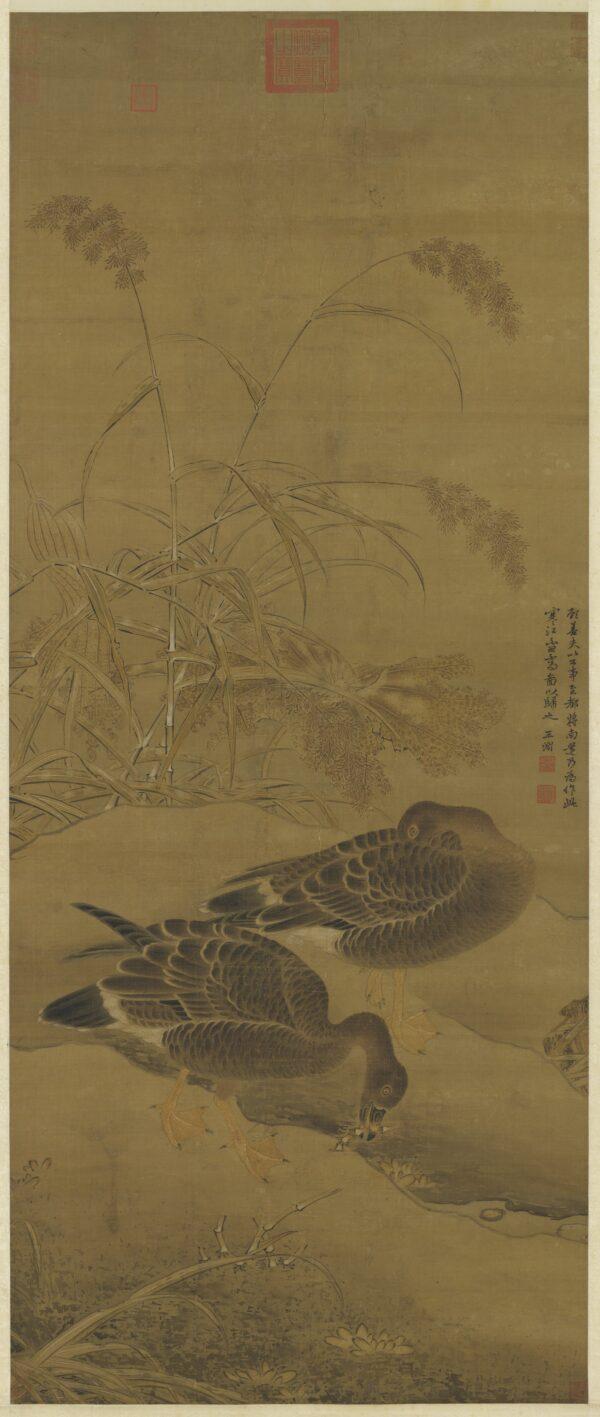
“Wild Geese by the Reeds and the Cold Lake,” Yuan Dynasty, by Wang Yuan. The National Palace Museum
On “Qiufen” (Autumnal Equinox), the sun shines exactly above the equator, and both hemispheres experience an equal amount of daylight. From then on, the Northern Hemisphere sees longer nights and shorter days. The sound of thunder begins to soften, water freezes, insects return to their nests, and flora and fauna wither away. This solar term overlaps with the Mid-Autumn Festival, when families admire the moon and feast on mooncakes together.
“Hanlu” (Cold Dew) falls when the dew is so cold that it is about to freeze. This is the best time to appreciate chrysanthemums in all their many shapes and colors. On “Shuangjiang” (Frost’s Descent), dew turns to frost. As yang recedes, plants shed leaves and wither, insects go dormant, and wolves start to hunt.
Winter: A Solemn Time
During “Lidong” (Winter Commences), water begins to turn to ice, the earth hardens, and pheasants look for clams in the lakes. Warming foods and tonics are suggested to prepare for the frigid winter: chicken soup, ginger duck soup, mutton hot pot, and the like. “Xiaoxue” (Minor Snow) embraces the dormancy of winter, and the snowy season begins. “Daxue” (Great Snow) heralds the heaviest snow, and the “winter-crying” birds go silent.On “Dongzhi” (Winter Solstice), yin gradually abates and yang rises, enabling the spring water to flow. Elk, which are associated with yin in traditional Chinese culture, drop their antlers during this period. People in ancient times believed that spring would arrive in the 81 days after elk drop their antlers.
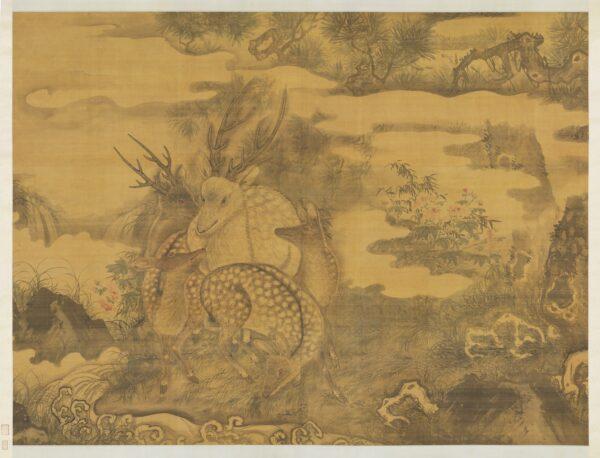
“Five Deer,” Ming Dynasty, by Chen Chun. The National Palace Museum
“Xiaohan” (Minor Cold) is the bitter-cold stage of winter, when wild geese begin to fly northward, swallows build nests to prepare for the new year, and pheasants crow from distant fields. “Dahan” (Great Cold) is the last solar term of the year. But the frigidity doesn’t stop people from welcoming the Chinese New Year: They paste New Year’s couplets on their doors and bring new purchases home. Although rivers are still frozen, hens start to hatch chicks and watch out for attacks from eagles.
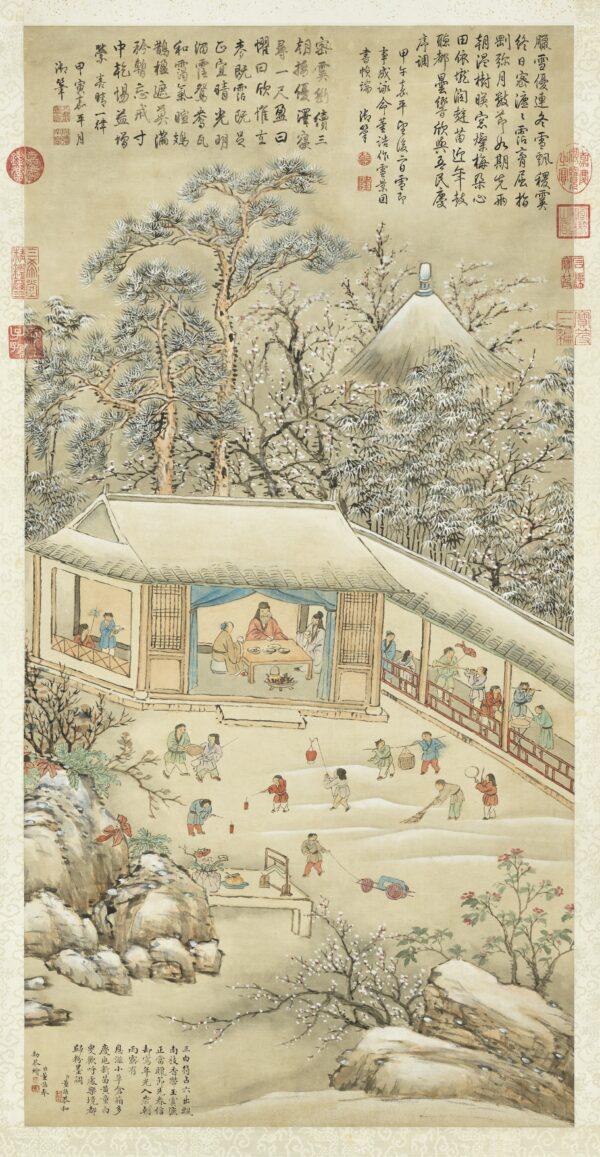
This famous painting depicts children merrily celebrating the Chinese New Year in heavy snow. “Snow Dedicated to the Emperor’s Poem,” Qing Dynasty, by Dong Gao. The National Palace Museum
Knowing the 24 solar terms gives us a glimpse into the beauty and characteristics of seasonal changes.
This article was written by Cora Wang and translated by Anne Chan and Brett Chudá into English. It is republished with permission from Elite Magazine.

